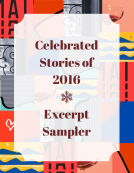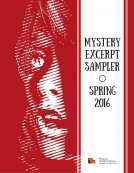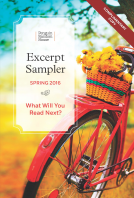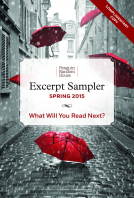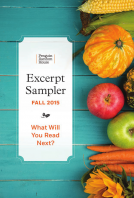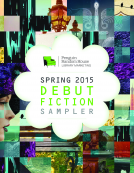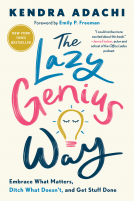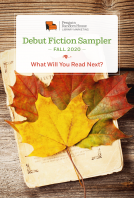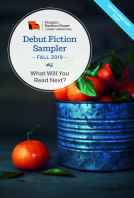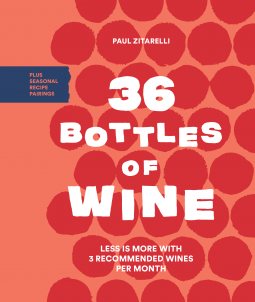
36 Bottles of Wine
Less Is More with 3 Recommended Wines per Month Plus Seasonal Recipe Pairings
by Paul Zitarelli
This title was previously available on NetGalley and is now archived.
Send NetGalley books directly to your Kindle or Kindle app
1
To read on a Kindle or Kindle app, please add kindle@netgalley.com as an approved email address to receive files in your Amazon account. Click here for step-by-step instructions.
2
Also find your Kindle email address within your Amazon account, and enter it here.
Pub Date Sep 18 2018 | Archive Date Jun 18 2019
Talking about this book? Use #36bottlesOfWine #NetGalley. More hashtag tips!
Description
Too much wine? Not last night, but at the wine store where it's bewildering to choose something good. In this friendly guide, a wine expert curates a shortlist of 36 bottles to try (3 varieties per month--a red, a white, plus something else like a sparkling or rose) and explains in an accessible, humorous style what and who makes each worth drinking. In addition, 30 recipes for monthly meals connect seasonal food to wine, composing beautiful sensory experiences. This book proves you don't need an encyclopedia when a handpicked selection delivers a world of wine.
Wines featured in the book by country of origin:
France: Grignan-les-Adhemar; Rose; Breseme Rouge; Quincy; Reuilly; Menetou-Salon; Savoie Blanc; Cote de Broouilly; Cote de Provence Rose; Muscadet; Chinon Rouge; Chablis; Tavel Rose; Montlouis Sec; Cremant de Bourgogne
Spain: Amontillado sherry; Tinta de Toro; Cava; Rias Baixas Albarino; Getariako Txakolina
Italy: Fiano di Avelino; Chianti Classico; Dry Lambrusco; Alto Adige Pinot Bianco; Langhe Rosso
Germany: Mosel Riesling Kabinett
Austria: Gruner Veltliner
Portugal: Madeira
Hungary: Tokaji Aszu 5 Puttonyos
Chile: Carmenere
America: Rose; sparkling wine; Oregon Pinot Noir; California Zinfandel; Washington State Red
Australia: Hunter Valley Semillon
New Zealand: Central Otago Pinot Noir
Paul Zitarelli is a Harvard-trained applied mathematician who abandoned that path for a life in wine. He is one of a small number of Americans to hold the WSET Level 4 Diploma (precursor to the Master of Wine) and applies that knowledge as a wine merchant in his retail business, Full Pull Wines.
Available Editions
| EDITION | Other Format |
| ISBN | 9781632171917 |
| PRICE | $19.95 (USD) |
| PAGES | 208 |
Featured Reviews
 Keith B, Educator
Keith B, Educator
There is certainly no shortage of books that have been written about wine. From guides with arcane rating systems of varietals, vintages, and growing regions to personal histories of great bottles that someone once drank, the selection seems endless. So, the first thing to realize about 36 Bottles of Wine, Paul Zitarelli’s engaging entry in this category, is that it is different. The premise of this book is compelling: For each month of the year, he suggests three different wines—a red, a white, and an “other,” such as a sparkling or dessert wine—that are seasonally appropriate and then pairs those with meals chosen to enhance the experience. For good measure, the author also intersperses several great sundry tips about this vital (to me, at least) topic, including which stemware to use, the proper serving temperature, how to taste the stuff properly, the source of wine headaches, and the vintage year strategies that wineries follow.
Zitarelli has an absolutely delightful writing style. His descriptions are very funny and not in the least bit pretentious. He consistently provides thoughtful and factual insights about every wine and food pairing, providing a nice blend of historical background, tasting notes, and opinion as to why each was placed in a particular month. Although he did not stress his intention in the Introduction, I appreciated the fact that the author went out of his way to recommend value options from lesser known growing regions whenever possible (e.g., he chose a Chenin Blanc from Montlouis instead of a more expensive option from across the Loire river in Vouvray). Also, it is worth noting that the entire book is beautifully illustrated; the photographs of both the wine and the food are stunning and add considerably to the quality of the text.
I cannot stress enough how everything in this wonderful volume was so well described, from the various wines to the accompanying meals to the peripheral essays. Of course, the heart of the book involves the wine itself and the vignettes I found particularly enlightening were those for Chilean Carménère, Sauvignon Blanc from Loire, U.S.-produced sparkling wine, Gruner Veltliner, Langhe Rosso, and Tavel Rosé. (By the way, the author seems to really like Rosé, but then so do I and I learned a lot about the several examples he features.) Also, it was impressive that among the three dozen bottles discussed, he only included one Chardonnay—and a Chablis at that—which expanded the horizons of this reader who is already far too familiar with that varietal. At the risk of stating the obvious, 36 Bottles of Wine is my new favorite book on this topic and one that I will use frequently from now on.
